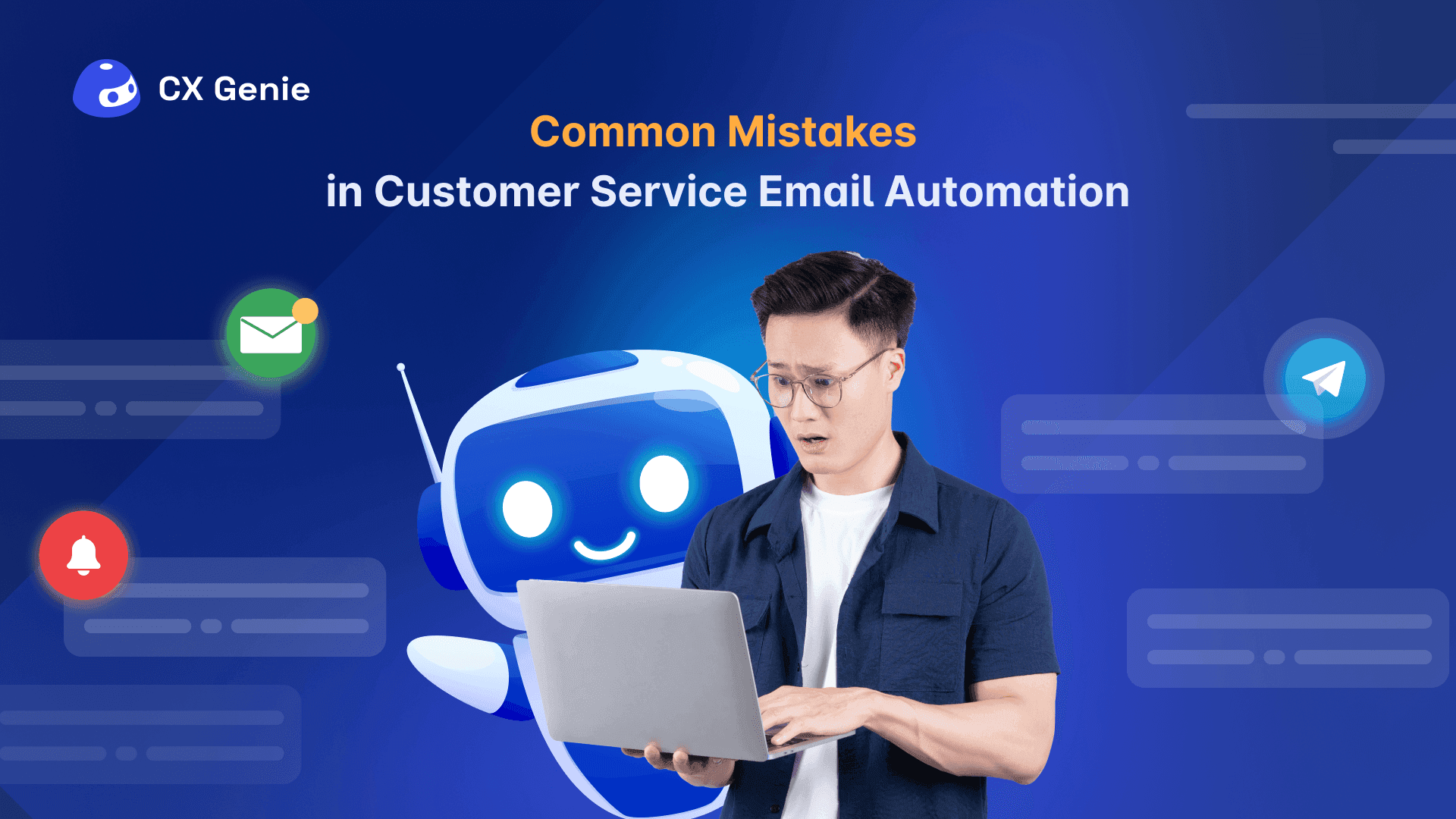Table of content
Common Mistakes in Customer Service Email Automation
Jan 05 2024
Table of content

In the digital age, where efficiency is paramount, many businesses have turned to email automation to manage customer service interactions. While this technology offers undeniable benefits in speed and consistency, navigating its implementation carefully is crucial. Missteps in email automation can lead to customer dissatisfaction and a tarnished brand image. This article explores the common mistakes in customer service email automation and offers strategies to avoid them, ensuring a seamless and positive customer experience.
Over-automation and Lack of Personalization
The Mistake: Excessive reliance on automation can lead to impersonal customer interactions. Generic, automated responses may fail to address specific customer concerns adequately, making customers feel undervalued.
The Solution: Implement a balanced approach. Use customer data intelligently to add personal touches to automated emails. Personalization, like addressing customers by name or referring to their past interactions, can transform a generic email into a more engaging and thoughtful communication. Tailoring messages to individual customer profiles not only enhances the customer experience but also boosts the effectiveness of your customer service strategy.

Ignoring Customer Feedback
The Mistake: Overlooking customer feedback in the automation process can create a gap between what customers expect and what they receive. Ignoring their input can lead to a static email strategy that doesn't evolve with customer needs.
The Solution: Make customer feedback a cornerstone of your email automation strategy. Regularly solicit, analyze, and incorporate customer feedback to refine and update your email content and approach. This responsiveness ensures that your automated communications align with customer preferences and evolving expectations, maintaining high customer satisfaction and engagement.
Inflexible Email Scripts
The Mistake: Rigid, unchangeable email scripts can become obsolete or irrelevant, failing to address customers' unique and changing needs.
The Solution: Create dynamic and adaptable email templates. Ensure your automated responses can be easily updated or modified to align with customer inquiries and situations. This flexibility allows your automated email system to remain practical and relevant, providing customers with appropriate and timely responses addressing their concerns or questions.

Neglecting Mobile Optimization
The Mistake: Not optimizing automated emails for mobile devices can lead to formatting issues and poor user experiences.
The Solution: Design all automated emails with mobile responsiveness in mind. Considering the increasing reliance on smartphones for email communication, ensuring that your emails display correctly on mobile devices is crucial for maintaining customer engagement and satisfaction.
Overlooking Follow-Up and Escalation Processes
The Mistake: Automated emails without precise further assistance or follow-up options can leave customers feeling unaided and frustrated.
The Solution: Incorporate clear pathways for additional support in your automated emails. Please provide links or instructions for customers to access more detailed help or to escalate their concerns to a live representative. This approach shows customers that you are committed to resolving their issues fully and will provide personalized assistance when needed.

Inadequate Testing and Monitoring
The Mistake: Implementing an automated email system without thorough testing and ongoing performance monitoring can lead to unexpected errors and inefficiencies.
The Solution: Conduct extensive testing of your email automation system before full-scale deployment. Monitor the performance and customer responses continuously, making adjustments to improve effectiveness. Regular monitoring helps identify and rectify issues promptly, ensuring the system functions smoothly and meets customer expectations.
Ignoring Timing and Frequency
The Mistake: Inappropriately timed or too frequent automated emails can annoy customers, potentially leading to unsubscribes.
The Solution: Be mindful of the timing and frequency of your automated emails. Thoughtfully schedule your emails and regulate their frequency to keep customers informed without overwhelming them.

Conclusion
While customer service email automation is a powerful tool for businesses, navigating its challenges is essential for success. Companies can leverage automation effectively by prioritizing personalization, flexibility, responsiveness, and continuous improvement.
Remember, the ultimate goal of email automation in customer service is to maximize efficiency and enhance the overall customer experience. Through thoughtful implementation and ongoing refinement, businesses can use email automation to build stronger customer relationships, fostering loyalty and trust.
Related articles
No data



